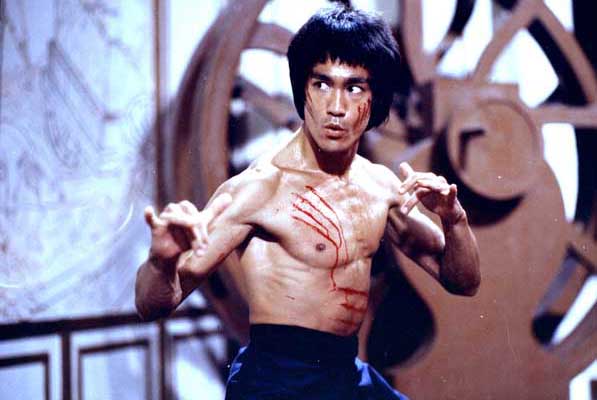I happened to catch a terrific documentary the other night, “I Am Bruce Lee,” which combines a well-researched biography of the late great martial arts star Bruce Lee with interviews with everyone from his wife Linda Lee Caldwell, to LA Lakers star (and martial artist) Kobe Bryant who discuss Lee’s legacy and enormous influence on American pop culture.
Much of the documentary focuses on Lee’s efforts to overcome racial stereotypes of Asians that were prevalent in the 1960s and ’70s (many are still with us), and his struggles against a system that was stacked against featuring a male Asian in a leading role.
One segment got me thinking, where the film asserts that the system is still stacked against Asians – even today, there has been no major Asian male star who has the draw of, say, a Brad Pitt.
Sure, Jet Li for a time took up the martial arts mantle, and so did Jackie Chan. But Li’s talent never transcended his action roles, and Chan’s brand in Hollywood is as a comedic lightweight even though he can act in dramatic parts. Plus, once niched into martial arts, you’re always a martial artist. Even Bruce Lee might not have overcome that hurdle, had he lived.
There are some potential future contenders, though: John Cho can hopefully rise above the youth market appeal of the “Harold and Kumar” films and build on his butt-kicking role as Sulu in the new “Star Trek” movies, and it’s possible to imagine Tim Kang (TV’s “The Mentalist”) and Sung Kang (the “Fast and Furious” movies) cast as big-budget leads someday.
But I can’t monku (complain) too much about the lack of Asian men in star positions. The fact is, we’re doing so much better than just a few years ago in Hollywood, that we should be celebrating.
Less than a decade ago, I was giving speeches on the lack of Asian faces on TV and in movies.
I grew up in a generation where Asians played roles that were subservient (Hop Sing, the cook in the TV western “Bonanza”) and silly (Fuji, or “Fooj” in the ’60s sit-com “McHale’s Navy“). We were always the sidekicks, the supporting players instead of the star, like Robert Ito, the actor who played the assistant to Jack Klugman’s “Quincy, M.E.” in the ’70s.
Ironically, Bruce Lee played the sidekick role but elevated it to star status, as Kato, the martial arts-fighting driver for the Green Hornet in the superhero series of the same name that only aired for one season in the late ’60s. He was so dynamic, so commanding a presence, that he helped spark the martial arts craze that exploded a few years later when he began making kung fu movies in Hong Kong.
But Lee’s tragedy was that his ambition included an idea for a TV series about a martial arts star that was stolen from him, and turned into “Kung Fu” starring a Caucasian, David Carradine (who was allegedly half-Chinese in the show). And he died before his biggest hit, the Hollywood-financed “Enter the Dragon” was released.
It’s just been in the past few years that Asian and Asian American actors have become commonplace in Hollywood – long after Hollywood mainstreamed African Americans, first with shows like “Sanford and Son” starring Redd Foxx and “The Jeffersons” (a black spinoff of the white “All in the Family”) in the ’70s and “The Cosby Show” in the ’80s. The studios tried an early experiment, casting comedian Margaret Cho in “All American Girl” about an Asian American family, but the show was a disaster, because it was about Hollywood’s image of an Asian American family. The producers told Cho she wasn’t Asian enough, and got her a coach.
But a few years ago, Asians started showing up in commercials, a sign that corporate America was noticing how many Asian and Asian American consumers are out there, and what a valuable demographic (college educated, high-income) we are. Ikea and Target noticeably began including Asians in ads, and in non-ethnic roles too — no “ancient Chinese secret” laundry owners). Verizon is another company today that seems to be including lots of Asians playing non-ethnic parts.
That’s the tipping point that we’ve finally reached. Yes, we may not have a leading Asian male actor to look up to yet, but there are many more Asians on both the big screen and small, and we’re not just playing martial arts masters, and we don’t speak with accents. Veteran actors like Tamlyn Tomita get lots of work on a variety of shows, and the next generation of stars are getting exposure (think Harry Shum, Jr. and Jenna Ushkowitz of “Glee“).
And we finally have a star in a leading role, Maggie Q (Maggie Denise Quigley), who is hapa Polish-Irish and Vietnamese, as the eponymous government assassin-gone-good in “Nikita.” She’s a fine actor with a broad emotional range, and the action skills to shine in the dynamic fight scenes.
I bet the men won’t be far behind, and Bruce Lee will be smiling down on us. Even better, maybe in a decade we won’t be complaining at all about the lack of Asians – men or women – in Hollywood.
An earlier version of this post was written for my monthly column in the Pacific Citizen newspaper.












Here’s a great video about why it’s important for Asian Americans to become actors, writers, and producers. http://youtu.be/qOwBGPkY0ZU